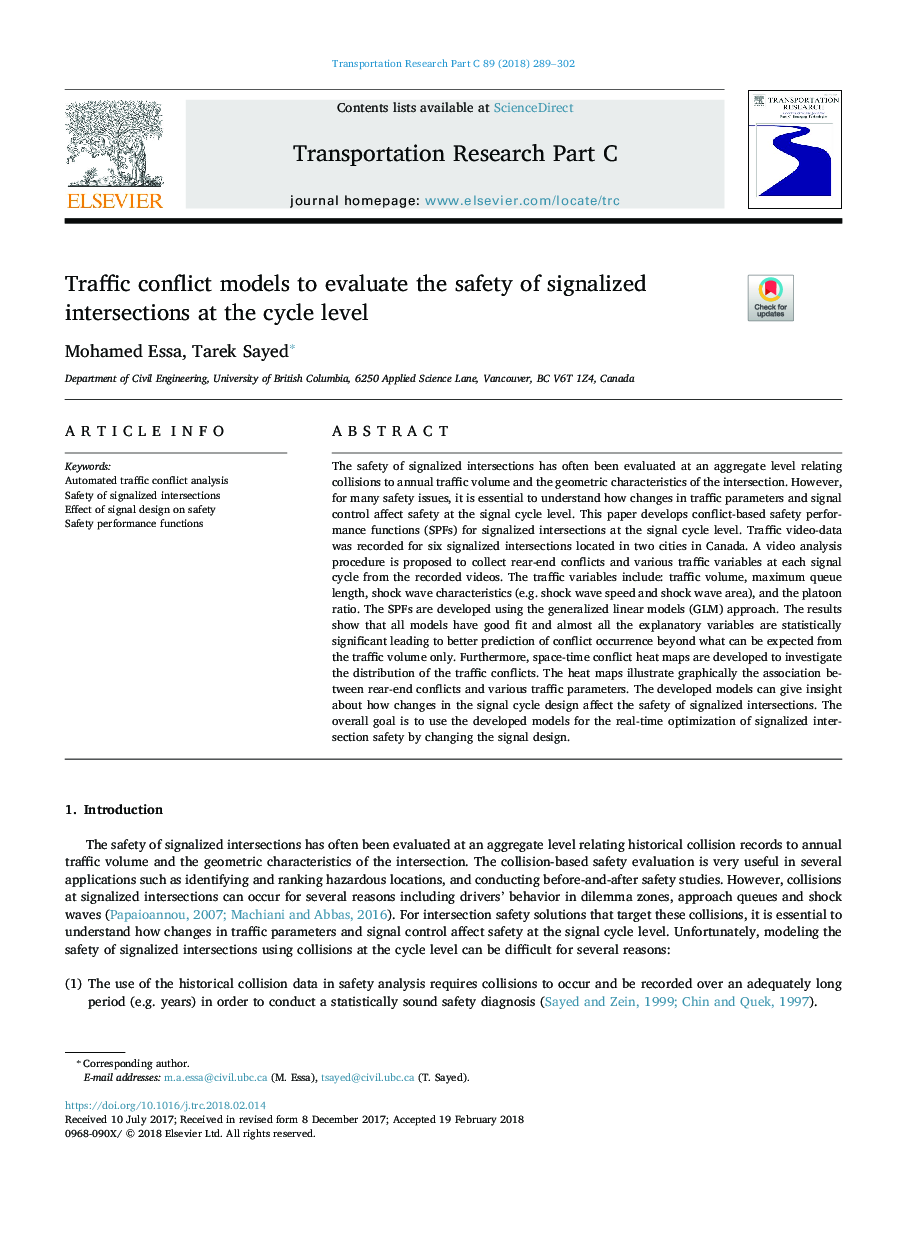| کد مقاله | کد نشریه | سال انتشار | مقاله انگلیسی | نسخه تمام متن |
|---|---|---|---|---|
| 6936088 | 1449659 | 2018 | 14 صفحه PDF | دانلود رایگان |
عنوان انگلیسی مقاله ISI
Traffic conflict models to evaluate the safety of signalized intersections at the cycle level
ترجمه فارسی عنوان
مدل های درگیری ترافیکی برای ارزیابی ایمنی تقاطع های سیگنال شده در سطح چرخه
دانلود مقاله + سفارش ترجمه
دانلود مقاله ISI انگلیسی
رایگان برای ایرانیان
کلمات کلیدی
تجزیه و تحلیل درگیری ترافیک خودکار، ایمنی تقاطع های سیگنال، تأثیر طراحی سیگنال بر ایمنی، توابع عملکرد ایمنی،
موضوعات مرتبط
مهندسی و علوم پایه
مهندسی کامپیوتر
نرم افزارهای علوم کامپیوتر
چکیده انگلیسی
The safety of signalized intersections has often been evaluated at an aggregate level relating collisions to annual traffic volume and the geometric characteristics of the intersection. However, for many safety issues, it is essential to understand how changes in traffic parameters and signal control affect safety at the signal cycle level. This paper develops conflict-based safety performance functions (SPFs) for signalized intersections at the signal cycle level. Traffic video-data was recorded for six signalized intersections located in two cities in Canada. A video analysis procedure is proposed to collect rear-end conflicts and various traffic variables at each signal cycle from the recorded videos. The traffic variables include: traffic volume, maximum queue length, shock wave characteristics (e.g. shock wave speed and shock wave area), and the platoon ratio. The SPFs are developed using the generalized linear models (GLM) approach. The results show that all models have good fit and almost all the explanatory variables are statistically significant leading to better prediction of conflict occurrence beyond what can be expected from the traffic volume only. Furthermore, space-time conflict heat maps are developed to investigate the distribution of the traffic conflicts. The heat maps illustrate graphically the association between rear-end conflicts and various traffic parameters. The developed models can give insight about how changes in the signal cycle design affect the safety of signalized intersections. The overall goal is to use the developed models for the real-time optimization of signalized intersection safety by changing the signal design.
ناشر
Database: Elsevier - ScienceDirect (ساینس دایرکت)
Journal: Transportation Research Part C: Emerging Technologies - Volume 89, April 2018, Pages 289-302
Journal: Transportation Research Part C: Emerging Technologies - Volume 89, April 2018, Pages 289-302
نویسندگان
Mohamed Essa, Tarek Sayed,
